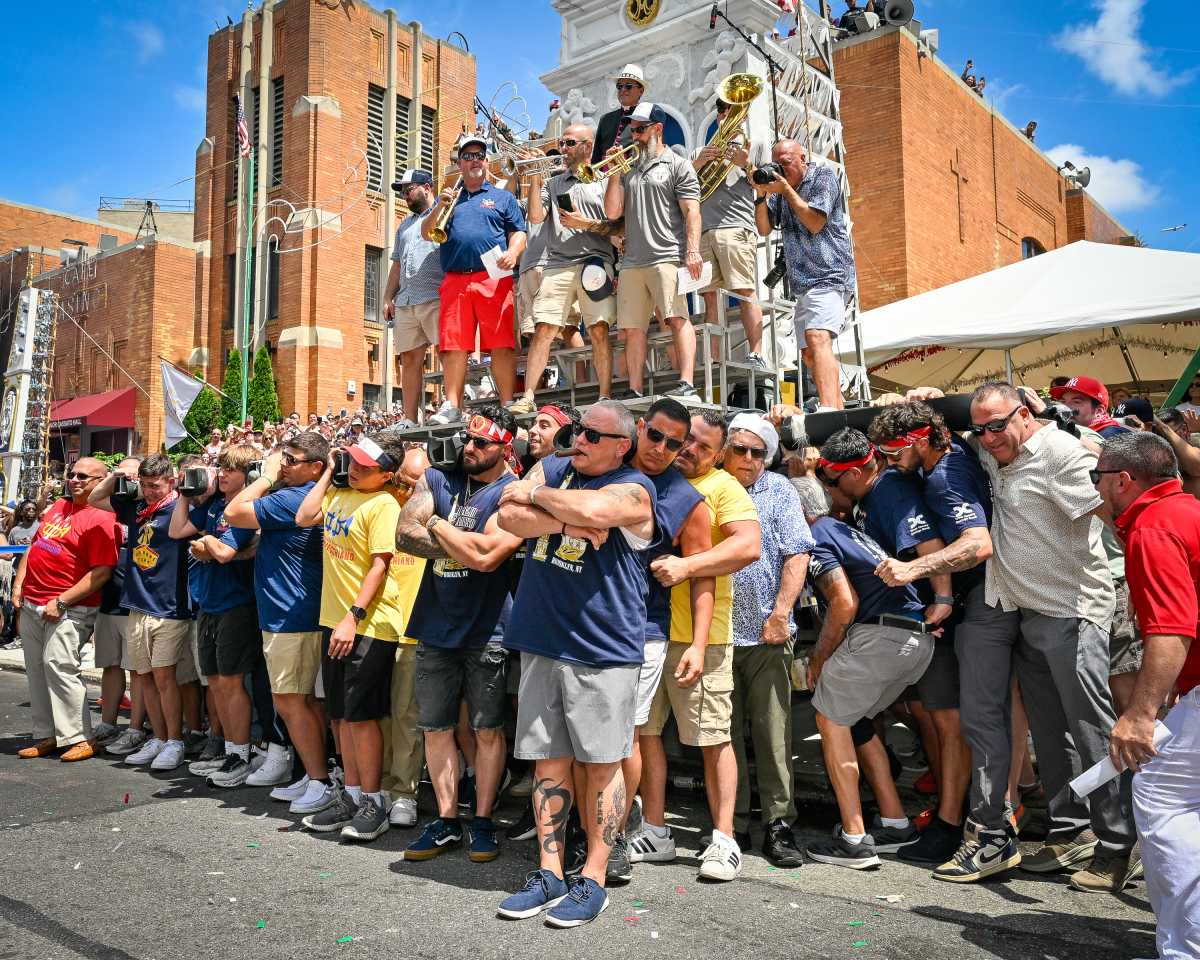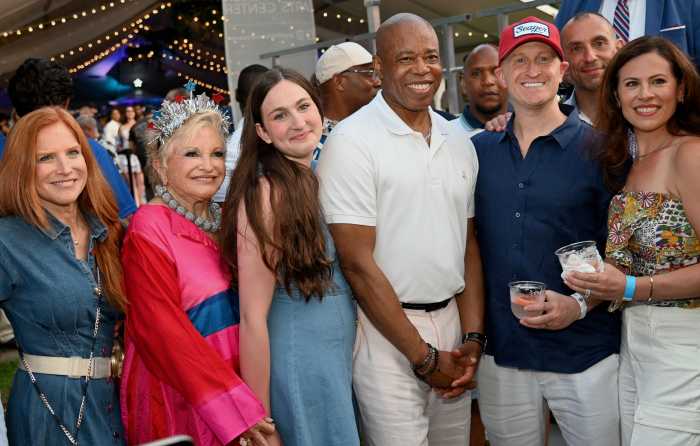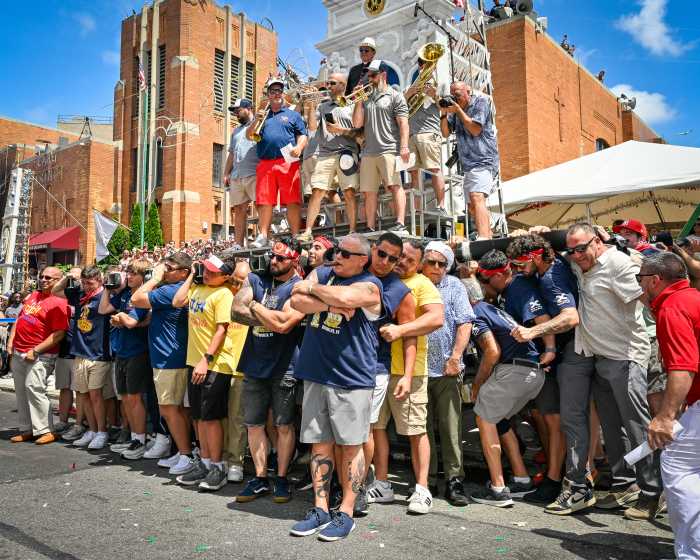
BY MARY REINHOLZ | David Horowitz’s conservative Web site, FrontPageMag.com, created a buzz in pacifist Catholic Worker movement circles last fall when it posted an article attacking the followers of co-founder Dorothy Day as hard-left 1960s-style radicals who are allegedly using the movement’s soup kitchen operation as a front to promote extremist politics and a “vile variant of liberation theology.”
The piece, posted Oct. 2 and carrying the byline of Spyridon Mitsotakis, a 27-year-old freelance writer, accuses Day’s “errant acolytes” of welcoming speakers and activists who espouse anti-Israel, anti-Semitic, pro-Assad and pro-P.L.O. propaganda during Friday night lectures at Maryhouse, the red brick Catholic Worker residence on E. Third St. where Day died in 1980. Day is now being considered for sainthood in the Roman Catholic Church.
Martha Hennessy, a granddaughter of Dorothy Day who writes for the Catholic Worker newspaper, also comes under fire in the FrontPage post, which is headlined, “Pope Francis and the Uncertain Legacy of Dorothy Day, a disturbing glimpse into the Trouble at the ‘Catholic Worker.’” It claims that Hennessy, who shares Day’s philosophy of nonviolence and works of mercy for the downtrodden, allegedly “availed herself of the protection of a Kalshkikov rifle” during a recent visit to Afghanistan.
Hennessy did not respond to a phone call to her Vermont farm requesting comment.
Joanne Kennedy, managing editor of the C.W. paper and another target of Mitsotakis’s jibes, acknowledged that Hennessy has photos of herself with armed people in the war-ravaged country.
“That’s what happens in Afghanistan. But that doesn’t mean she availed herself” of a weapon, Kennedy said in a telephone conversation. “Under no circumstances would Martha hold a gun.”
Kennedy said that the FrontPage article “created a buzz for a moment and people said, ‘Oh, my God, did you see it? Who wrote it?’ But we didn’t respond. We don’t want to feed that kind of energy. What good would come of it?”
She admits believing at first that the snarky article was written by Robert Reiss, 63, a longtime attendee of events at Maryhouse who, she said, is known for objecting to talks on Israel and Palestine. She maintains Reiss is Mitsotakis’s “main source.”
Kennedy characterized the FrontPage charges as false or “taken out of context.” For example, she disputed Mitsotakis’s claim that her newspaper’s circulation was declining “vastly” because of its political bent. Instead, she said, the circulation began “growing steadily” after 2006, the year when the paper cut its list of subscribers who did not respond to a query asking them to reply if they still wanted to receive it at an increased annual price of 25 cents “because our printing costs had become quite high.”
As a result of the cuts, Kennedy said, the paper reduced its subscribers from a full list of 65,000 to about 20,000 “and we cut our printing costs by a third.” Since then, she said, the paper’s circulation has increased to 26,000.
Kennedy, who lives at Maryhouse, dismissed Mistotakis’s charge that residents are vacating its rent-free rooms because of their alleged disgust over the lefty politics of those in charge.
“Who would give up free rent in New York, even for political reasons?” she said.
She said that Mitsotakis — a 2013 graduate in history from New York University who does not appear to live in the city — did not contact her for an interview and she didn’t meet him at Maryhouse. “But he could have been here,” she conceded.
David McReynolds, the famed East Village pacifist and socialist who speaks frequently at Maryhouse, announced late last November that there could be a FrontPage writer in its midst before the start of a Friday night panel marking the 50th anniversary of pacifists burning draft cards in Union Square to protest the Vietnam War.
“Is there a reporter for David Horowitz here?” he inquired sardonically.
The 86-year-old McReynolds, a retired national secretary of the War Resisters League, whose last name is misspelled in Mitsotakis’s piece, was clearly angry.
“I was furious,” he recalled last week. “The content was unfair and typical of the Horowitz people. They are very far right — and not legitimate as conservatives, like The National Review is. They don’t have those credentials.”
McReynolds acknowledged that his anger was stoked by reports that Reiss, who considers himself a Catholic Worker, was the author of the piece. He said that the Catholic Worker movement has frequently been attacked over the years for its left-wing stances on issues going back to the Spanish Civil war, and noted that the Maryhouse events draw a diverse crowd. Attendees include students from Catholic Universities like Fordham to retirees gripping canes and walkers when they arrive at the first-floor auditorium.
Maryhouse volunteers described Reiss, a magician and writer, as a man who projects an “erudite William Buckley” persona and likes to “stir things up” in discussions.
Reiss told this reporter that he had penned a history of The Catholic Worker for The Villager and also lectured at St. Joseph’s Catholic Worker residence on E. First St. in 1995. He presented a written note about the FrontPage article following the Maryhouse panel on draft card burning. Reiss later denied that he wrote the article, noting he doesn’t own a computer, but claimed it was largely accurate.
After another Maryhouse event, Reiss acknowledged that he had given information on the Catholic Worker movement to Mitsotakis — mainly, he said, on “anti-Semitism” expressed at Maryhouse Friday night gatherings.
Reiss subsequently contacted the editor in chief of this newspaper and insisted that his contributions to Mitsotakis’s article amounted to only “one percent,” and that there had been “no stir” at Maryhouse as a result of the article.
Meanwhile, other Catholic Workers, past and present, still mistakenly believe that Reiss is the sole author of the FrontPage piece.
Bill Antalics, a former resident at the St. Joseph’s Catholic Worker building who now lives on E. Eighth St. and is quoted in the article, said Reiss discussed it with him several months ago.
“Robert came to me and was very, very angry about anti-Israel” comments he had heard at Maryhouse, he said. “I told him to be careful and fact check because he would become an outcast. He would lose friends” in the Catholic Worker movement.
Antalics said he hadn’t read the piece and didn’t recognize the name of Spyridon Mitsotakis.
This reporter finally communicated with Mitsotakis in a pre-dawn exchange of e-mails. He declined to answer questions about Reiss’s contributions to his FrontPage article.
“I stand by my reporting,” Mitsotakis wrote, adding that he had visited Maryhouse “many times” — and “attended many events” — first inquiring of Hells Angels on E. Third St. on how to get to the building.
“It is noteworthy that there are many back issues of the Catholic Worker newspaper available for free at Maryhouse and the sentiments I described often come through in the paper,” he noted.
Mitsotakis, who did not respond to a request for a photograph of himself, said his interest in the Catholic Worker movement began because of his “fascination” with Bayard Rustin, an African-American leader in the civil rights struggle who advocated for nonviolence, socialism and gay rights. He also noted that Rustin was a “personal hero” of his.
Eventually, he said, his interest in Rustin grew into an interest “in the pacifist movement and the War Resisters League. There is a significant overlap in membership between the W.R.L. and C.W. so I decided to [see] if the same stuff I found upsetting about W.R.L. was happening in C.W.”
Early in his article, Mitsotakis states that the material represents the “winnowing” of a year’s worth of interviews with people at “New York City chapters” in the Catholic Worker movement. He claims without substantiation that donors to the Catholic Worker newspaper are “sending less money” because of articles that “slander American foreign policy.”
The piece quotes senior Maryhouse resident Roger O’Neil, an associate editor at the Catholic Worker, stating, “In my day, we took seriously our CW ‘vows of poverty’ and didn’t fly around the world on these anti-American junkets.”
O’Neil told The Villager that the wording of the quotes “was not something I would say,” but noted he made a similar comment in discussion with Robert Reiss. He characterized Reiss as a “complicated guy, but we need people like him in some ways.” O’Neil said Mitsotakis did not contact him and “nobody has seen him around” Maryhouse.
Informed of O’Neil’s statements, Mitsotakis wrote back to this reporter, saying in part, “I have to decline to comment any further. I don’t want this to turn into a witch hunt.”
Reiss continues to attend meetings at Maryhouse, according to Joanne Kennedy. What does she say to him these days?
“It’s in our Christian spirit to say to him, ‘We’re going to forgive and try to love you,’” she said.
Reiss subsequently mailed to The Villager a packet containing a copy of his May 5, 1983, article — a “laudatory article,” he noted — that ran in the paper, “The Living Legacy of Dorothy Day, The Catholic Worker.” He also included, among other materials, a 1972 letter from Judith Malina, the late director of The Living Theatre, to a federal judge on behalf of Reiss during his trial for refusing to register for the draft.
“Robert Reiss’ refusal to register for war is a meaningful part of a long and culturally important struggle in which we, you and I, and all of us are engaged,” Malina wrote Judge Charles Brient, Jr.
Also included in Reiss’s packet was a 1995 letter from Frank Donovan, Day’s “right-hand man and major domo of the [Catholic Worker] operation in N.Y.C.,” Reiss noted, thanking him for having given the group a lecture on Reiss’s grandmother, the Village artist Sarah McPherson, at one of their Friday night meetings.
In one of several letters faxed to The Villager, Reiss said, “It is slander (and libel if published) for certain individuals to assert, as they apparently have to reporter Mary Reinholz, that I am the author [of the Mitsotakis article in question].”
Due to difficulties reaching Reiss by phone — all calls go directly to an answering service — he only had one phone conversation with the paper, in addition to his interactions with the reporter at Maryhouse. Reiss wanted to set up a face-to-face meeting with the paper’s editor in chief, who left him a message, asking if he could speak on the phone at a mutually convenient time. Reiss did not return the call.
Reiss added that Mitsotakis worked on the article for a year.
“The Catholic Worker representatives, rather than engaging openly with the issues raised by Mr. Spyridon Mitsotakis, have embarked upon a McCarthy-like ‘witch hunt’ to identify as many sources within the C.W. community,” Reiss wrote. “Myself, I am a source for 1 percent of the author’s investigative piece, and one unattributed quotation.”
Reiss added that he feels a part of the Maryhouse group and is annually invited to their private Thanksgiving and Christmas get-togethers.
“There was no stir” over the article, he repeatedly stressed.
With reporting by Lincoln Anderson






































